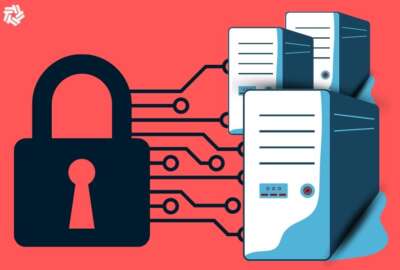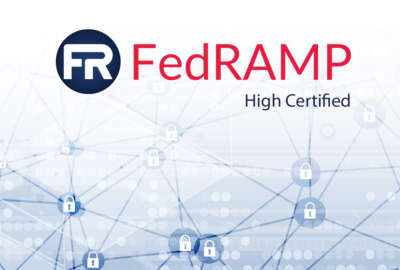Hubbard Radio Washington DC, LLC. All rights reserved. This website is not intended for users located within the European Economic Area.
NASA SEWP to drop fee again, launch new customer initiatives
Joanne Woytek, NASA SEWP program manager, said the space agency now plans to implement the next generation of the technology GWAC by May 1 after reexamining ven...
NASA still is five months away from kicking off its next generation governmentwide acquisition contract known as SEWP V.
But that isn’t stopping the space agency from rolling out a series of new initiatives to give customer agencies more data and context about their spending than ever before.
The first major initiative is another cut to its fee to use the Solutions for Enterprise-Wide Procurement (SEWP) contract — the second one in the last three months.
Joanne Woytek, NASA SEWP program manager, said Thursday that starting in March NASA will charge agencies 0.39 percent, down from 0.40 percent, to use the GWAC. In October, Woytek announced SEWP was lowering fees to 0.40 percent from 0.45 percent.
The reduction in fees comes after the GWAC took in $3 billion in revenue in fiscal 2014.
“We were going to at the beginning of SEWP V start at 0.39 percent and include the price of the fee in the product price. We just had a meeting with our SEWP IV contract holders and got them to agree to add the fee to their line item pricing and we will be able to lower our fee to 0.39 percent starting in March,” Woytek said in an exclusive interview with Federal News Radio. “Hopefully, this will decrease the cost to the government for using us.”
She said SEWP will continue to show customers that they paid a fee, but previously it was confusing to have a separate line item.
“It’s a non-profit to make enough money to run the program. If I make too much money, I’ll lower the fee,” Woytek said. “If I make too little, I would find ways to adjust the budget.”
20 percent ahead of last year
Woytek said 2014 not only brought record revenue, but also more than 25,000 orders with the average order rising to almost $120,000. She said this means agencies are not just buying one-off products, but using the contract more strategically. At the beginning of SEWP IV, the average order was about $70,000.
“We were originally supposed to end SEWP IV last year, and we had made some plans to transition some program stuff with SEWP V, but we realized SEWP V has to wait. So instead of sitting back, we are being as aggressive as we can with our program, working with our agencies and with our contractors,” she said. “We are currently 20 percent ahead of last year even though we are in this period of transition.”
Woytek said the Defense Department is the largest user of SEWP IV, followed by the departments of Veterans Affairs and Justice with NASA, the Department of Commerce, the Department of Treasury and the General Services Administration all in the top 10.
NASA is re-examining the bids under SEWP V after a series of protests blocked the program from going forward after making awards in September. This was the first time in the program’s 20-year history that it has stalled because of a bid protest.
Woytek said NASA decided to take corrective action instead of letting the protest run their course. She said NASA expects to make new awards in the winter and launch SEWP V May 1. NASA extended SEWP IV to April 30.
The delay of SEWP V isn’t stopping the program from launching a several data management initiatives to give agency customers more and better information about what they are buying, who they are buying it from and how to get the most out of their procurement dollars.
Woytek said these innovations have been in the works for as much as a decade, but finally are ready for prime time.
“A lot of what’s happening right now in March is not because I decided in February or last year or even two years, but many years ago I started looking at how could we do better product classification, what is out there. We tried numerous things and they didn’t work well. We tried using the United Nations Standard Products and Services Code (UNSPSC). It just doesn’t cover the situation like we need. We kept looking for industry or someone to help us find that answer,” she said. “It’s a big step and it’s been incremental throughout the years. And I already have, as my staff knows, a list of 100 or so new things that will be coming down the road that will take a year or years in some cases to come to fruition, but when they do we will have tested them out to make sure they are workable.”
Customer catalogs, Web pages
Woytek said one the biggest changes is the data SEWP will list about the contractors, including any past performance concerns, size standard and socio economic classifications, whether their products are Energy Star or EPEAT approved and their Trade Agreements Act designation.
Additionally, SEWP will provide customer agency information about their buying habits, and create individual customer Web pages that list approved products or catalogs, service level agreements or other important contract documentation and clauses.
“We want to be more of a leader in terms of giving information and giving assistance to our agency partners,” she said. “How can we provide information to what’s being bought, so they don’t have to do it themselves. We can go to them and give them a report on what they did last year.”
Woytek said SEWP found a way to automate many of these processes to make it more efficient and cost effective.
“For a long time, we took the view of not collecting the data for the CIOs, but realized they need that help because agencies don’t have it in their systems to collect,” she said. “We found a way to categorize our products so we can say, ‘This many laptops or this many printers were purchased by your agency. How much did they meet a certain policy? How many were bought that were tagged as being approved by you as opposed to getting a waiver?’ We can give that to the CIOs so they can make better decisions. We don’t want to make decisions for people, we just want to give them information so they can come back and use in the best way.”
A third new initiative is focused on supply chain security risk management.
NASA has been working with the Defense Department and the Open Group Trusted Technology Forum on an industrywide standard and guidelines for manufacturing, sourcing and integrating trusted, secure technologies to help reduce threats and vulnerabilities in the global supply chain.
Woytek said SEWP recognizes one of the areas where they can help in letting their agency customers know whether they are buying from a trusted source or not.
“It’s an obvious place where we can help our customers, and help them to understand that you can’t get 100 percent assurance, but you need to do a risk decision,” she said. “When somebody comes to us and says they want to buy a product XYZ and I see it much cheaper over on another contract, I want to be able to tell them, ‘It’s authorized here, but not over there, so make your decision based on that.'”
Thinking about making a move
SEWP’s success and upcoming changes have even begun convincing several agencies to reconsider whether they want to run their own multiple award IT products contracts.
Woytek said she’s talking with six large agencies about how best to increase the use of SEWP.
The Interior Department in August 2012 was one of the first agencies to mandate the use of SEWP IV along with several other multiple award contracts. Interior told its bureaus to use SEWP for Microsoft Windows and Apple IOS servers and systems. VA also mandated SEWP in 2007.
“I actually don’t want any direct, you have to use this sort of view. We are a service-oriented organization,” Woytek said. “People should use us because it makes sense not because it’s in a memo. We should be motivated not by paper but by showing them and continuing to show them our work.”
RELATED STORIES:
NASA SEWP lowers fees for agencies
Belva Martin, Government Accountability Office
Copyright © 2024 Federal News Network. All rights reserved. This website is not intended for users located within the European Economic Area.
Jason Miller
Jason Miller is executive editor of Federal News Network and directs news coverage on the people, policy and programs of the federal government.
Follow @jmillerWFED
Exclusive
Artificial Intelligence
Read more





